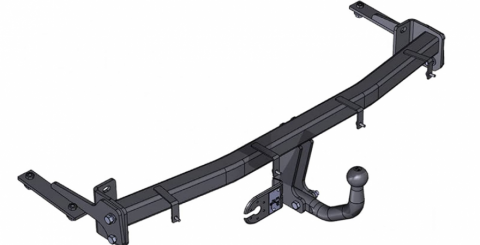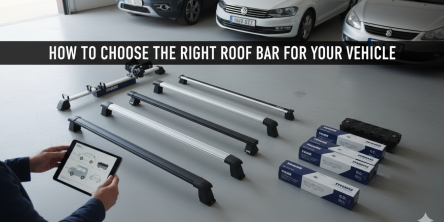How to Choose and Install Gooseneck Hitches

When it comes to heavy towing, you must ensure that you use the right equipment for the job. Your choice of a pickup truck, trailer, and hitch is vital to ensuring safe and proper towing. This write-up discusses the right way to choose and use a gooseneck trailer.
Before we go ahead and share our tips, it is important that we understand why and when you should choose gooseneck hitches. The first thing you need to understand is that choice of hitch highly depends on the amount of load you wish to tow.
Class I and class II hitches are sufficient for lighter loads, and for loads around 10,000 pounds, you will need class III and class IV hitches. For a load between 10,000 pounds and 30,000 pounds, you require class V or gooseneck hitches.
The Basics of Gooseneck Hitches
A gooseneck hitch is anchored through the bed of pickup trucks. All other types of hitches are extended from the back of the towing truck.
A hitch ball is used to lock gooseneck hitches into a place that assists the trailers in taking a sharp turn. Other types of hitches connected from the back of the vehicle do not have this capability.
The cost of a gooseneck hitch varies and depends highly on the model you choose. It should cost a couple of hundred dollars, and sometimes installation kits are also included in the price. However, it would be best to check with a dealer about the inclusions.
Also, the installation of the gooseneck hitches is not uniform for all. It would depend on the type of model you choose. If you plan to install it yourself, you need to discuss it with the dealer and choose an easier model.
How to Choose Gooseneck Hitches
Here are some simple pointers to remember when buying and choosing a gooseneck hitch:
#1. Confirm the weight or load capacity
As mentioned earlier, gooseneck hitches have the capacity to handle heavy loads. However, you need to double-check the capacity before you go on a make the final purchase.
In most cases, manufacturers can provide information on the recommended towing capacities of their vehicles. For instance, here, the Big Tex gooseneck trailers have a capacity of 10,680 lbs. Doing this would allow you to determine whether you will have certain leverage of putting additional load on last-minute changes.
One of the best ways is to calculate the trailer's weight when it is fully loaded and then compare it with the capacity. However, it is important to remember to leave yourself some wiggle room in case you need to add some cargo at the last minute or accidentally calculate the weight of your load lower than it is.
#2. Confirm that your trailer is suited to gooseneck hitches
Before you contemplate purchasing a gooseneck hitch for your truck, you need to be aware of the fact that only specific types of trailers can be attached to gooseneck hitches. Your trailer should have an area in the front that can stick out from the remainder of the trailer.
#3. Check for the level of expertise required to install the gooseneck hitch
As mentioned in the initial segment of this article, the installation of gooseneck hitches varies from model to model. Some gooseneck hitches can be installed easily on your own. However, some would require professional assistance.
If you have a truck that will make the work difficult, you shouldn't scoff at hiring a professional to install you. It is of the utmost importance that everything is carried out correctly, from drilling the hole for the hitch ball in the appropriate place to firmly fastening the hitch system to the vehicle's frame.
During installation, it is important to keep an eye out for important components like fuel lines and brake lines. In certain configurations, you may be required to disassemble some pickup truck components to get the assembly in the correct location.
How to Install Gooseneck Hitches
The method of installing gooseneck hitches varies from brand to brand. Still, the one thing consistent throughout all installation jobs is following the included instructions precisely to ensure everything is completed correctly. The tools needed for installing gooseneck hitches are often ones that are already sitting about in the garage. Various drills, saws, and wrenches are at the top of the list of necessary tools.
Here are some common steps that might be required to install your gooseneck hitch:
#1. Drilling a hole in the truck bed
This is one of the most common steps to install a gooseneck hitch. Some modifications would be required to install a gooseneck hitch to your trailer, and drilling a hole in the corner of the truck bed is a common modification.
It would require determining where the hitch ball's hole must be created. This can be done by measuring the distance away from the truck bed's rear and centering it to the left and right. Both of these measurements are important stages in the process.
This allows the underlying structure to securely connect to the hitch ball, which, in many models, may be folded away or removed when there is no need to pull anything behind the vehicle.
#2. Bolting the hitch assembly to the frame of the truck
It is common practice to attach the hitch assembly to the vehicle's frame using bolts in several locations. This creates a reliable connection between the truck and the trailer. Gooseneck hitch assemblies often have safety chain anchors as a standard built-in feature to guarantee that the trailer will not detach from the vehicle if the hitch fails.
#3. Be ready to do a lot of measurements
You should be ready to conduct much measuring throughout the installation process since you want to ensure everything is aligned correctly. While putting everything in its proper location, you should also check to ensure that you are not causing any damage to the vehicle's essential components. You always have the option to bring in an expert to help you with the procedure if you are unsure about what to do next.
Similar Articles
Ever feel like your brain's about to explode looking at rows of cars and their endless specification lists? You're not alone
Here's something most small business owners discover the hard way: finding dependable, budget-friendly ways to move equipment and inventory feels like solving a puzzle that keeps changing shape
When you need a bit more space for gear or want to take your next adventure on the road, a good roof bar setup can make all the difference
How automotive software transforms vehicles into data-driven goldmines, unlocking new insights, safety, and innovation on the road.
Distracted driving is the top cause of road collisions. Learn how mobile use, habits, and safety measures impact accidents and how to prevent them.
Choosing the right Letrigo Cargo Bike for your lifestyle means balancing performance, comfort, and practicality. Whether you're planning family outings, daily errands, or heavy cargo transport, these bikes are engineered to offer an exceptional riding experience that meets your unique needs.
Discover the best bike lights for night riding in this ultimate guide. Learn about front & rear lights, safety tips, top brands, and maintenance for a safe, illuminated ride after dark.
When it comes to construction or landscaping projects, hiring earthmoving equipment can be a practical solution. However, finding affordable earthmoving equipment hire can be a challenge for many businesses and individuals. With the right approach, costs can be minimized and efficiency maximized
Learn how to choose the right excavator for your construction project. Learn about types, attachments, size, efficiency, and key factors to ensure success.









